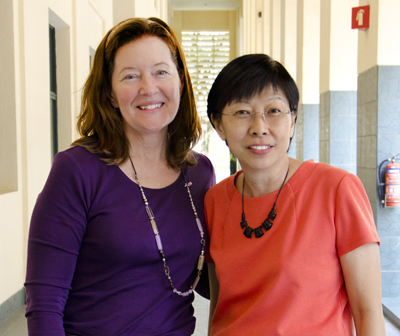Why Singapore’s English Teachers Should Embrace Singlish, Not Fight It
Is it time for Singaporean educators to embrace Singlish as a legitimate learning tool? What the Research […]
Read More
Being part of a research-based teaching intervention is not easy, especially when it requires long-term commitment. However, some teachers took on this challenge by relooking at the way they teach reading comprehension.
Different types of research have different goals, and intervention research’s is to make a change in the classroom.
NIE researcher Associate Professor Rita Silver says, “We’re not just trying to find out about something or make recommendations. We’re trying to change something during the research process, so it’s really very intensive.”
For an intervention to work, Rita believes that a lot of time is needed for the teachers to understand the process as well as the new strategies. They have to be comfortable enough to adapt them for their own students.
“That’s always the goal – not to follow the researcher’s recipe, but to understand the innovation deeply and adapt it to what the students need,” Rita explains. “And if you want something to take hold, a longer commitment is needed from both the researchers and the teachers.”
Rita and Dr Jessie Png, Sub-Dean of the Diploma Programme and School Partnerships in NIE, embarked on a 3-year research project with a primary school to improve pupils’ reading comprehension through discussion. The heart of the intervention is to encourage teachers to pose questions and probe students’ understanding as they read a piece of text, so that they become more critical readers (Find out more about the project in “Sustaining Good Classroom Interventions” in ReEd, Volume 14).

Rita Silver and Jessie Png believe that fostering good relationships with school leaders and teachers is important for a succesful intervention
What makes for a successful intervention? Sustainability is one clear indication. And to sustain the intervention, Rita says that researchers and teachers have to work together to maintain it.
The issue for some schools is that after providing guidance for a short-term intervention, the researchers leave. The teachers either feel stranded, or start a new project without mastering what they had learned from the previous one.
Rita notes, “Even though it is tedious to keep working on it over several years, we found that it’s really important to do interventions longitudinally.
“In the first year, the teachers were trying to figure out what they were supposed to do. In the second year, they were practising it, getting more comfortable and adapting it to their pupils’ needs. It was only in the third year that they could really run with it.”
In the school Rita and Jessie worked with, the teachers mastered questioning techniques for teaching reading comprehension, and then mentored and trained other teachers.
“At the start of the second year, we asked if the teachers involved were able to share their new knowledge with their colleagues,” Rita shares. “But they didn’t feel confident enough. So we gave them another year, and they actually agreed to teach the other teachers. So again, the longitudinal aspect of the project is very important.”
By the end of the research project, the school took over the intervention and wove it into their teachers’ professional learning community (PLC) discussions.
“Even though the teachers and Head of Department were hesitant at first, they were willing to try, and they saw the change in their teaching,” Rita says. “It’s really a joy for us to see how it has progressed.”
That’s always the goal – not to follow the researcher’s recipe, but to understand the innovation deeply and adapt it to what the students need.
– Rita Silver, English Language and Literature
Rita and Jessie found that close collaborations between the school leaders, teachers and researchers are also important for a successful intervention.
“Having an expert to guide the teachers along is important,” adds Jessie. “It can be quite challenging for the school if they have to constantly try and figure things out on their own.”
Despite taking a step back after the school had successfully taken over the intervention, Rita and Jessie still participate in their PLC discussions by invitation. The teachers find it especially useful when they are given critical feedback by Rita and Jessie, because some do not feel comfortable providing such feedback to their own peers.
Jessie notes that teachers have to be open-minded when participating in any intervention. Some teachers initially did not feel ready to change their questioning style. They worried about unexpected questions and answers. But through practice and mentoring, they learned to be more confident.
Rita emphasizes that teachers have to be willing to take time. She and Jessie tracked the students with reading comprehension tests at the start, middle and end of every year, and found that there were no significant differences between students in the project and other students during the first 2 years.
However, in the final year, they found that students who were taught by the most experienced teachers in the project did better comparatively. Hence, only when teachers were using the intervention methods more consistently and effectively did the students produce better results.
“Work with a group of peers and work with a mentor,” Rita advises teachers. “Don’t expect immediate results – it takes some time for the teachers to learn, just as it takes time for the pupils to learn.”